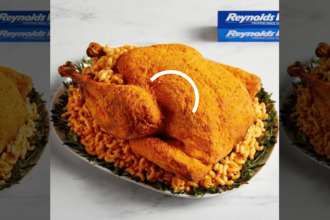Developing strong gross motor skills early on is key for a child’s overall growth and development. Gross motor skills encompass movement and coordination of the arms, legs, and other large muscle groups. Mastering skills like sitting, crawling, walking, running, and jumping pave the way for participation in sports and other physical activities.
As a child grows, there are many engaging activities parents can incorporate to promote gross motor development at different stages. The Pikler triangle is an incredibly versatile climbing structure that facilitates practice and play across age levels. Here are some ideas for making the most of the Pikler triangle or other similar structures tailored to different ages and abilities.
Understanding the Pikler Triangle
Before diving into the activities, it’s crucial to understand what a Pikler Triangle is. Originating from the Montessori philosophy, it is a sturdy, climbing structure made with high-quality materials, specifically designed for young children. It offers a safe and enjoyable way for kids to explore their physical capabilities, encouraging balance, coordination, and spatial awareness.
Accessibility Considerations
The innate flexibility of the Pikler triangle lends itself well to adaptation for children with special needs. Its three-entry point base allows wheelchair access. Competent climbers can assist less mobile friends in scaling slopes. Affix braille markers along handrails or incorporate multi-sensory accents on platforms. Use tactile mats or softer fall zone materials. Colored tape or scarves hanging off rails can aid visual tracking for lower-functioning children as they climb. Verbal storytelling or music stimulation can be woven into activities to optimize engagement.
More Play Ideas
- Use triangles as “car wash” tunnels for toy vehicles, complete with sponge squeegees
- Incorporate into obstacle courses navigated under, over and through
- Arrange multiple units together and drape them with sheets to create cozy forts
- Set up action figure rescue scenes on platforms
- Create ball runs or dominoe chain reactions along slopes
- Use as easels for young painters or magnetic symbol storytelling
The possibilities are endless for imaginative minds! This versatile structure provides a foundation to build all kinds of active games and educational activities on.
Activities for Different Age Groups
Infants (0-12 months)
Floor Time – Simply allowing infants unstructured play time to move freely on their own builds strength and control. Place babies on activity mats near the Pikler triangle and let them reach, swat, kick, and scoot towards it. The intriguing angled shape and gently sloped sides spark curiosity and exploration.
Assisted Climbing – With supervision and assistance, gently guide tiny hands and feet to introduce climbing motions. Avoid over-manipulating, rather let infants set the pace. Verbal encouragement goes a long way. Descending can be even more daunting for infants, so lend steady support.
Rolling Practice – Position infants on their backs in front of one of the diagonal panels. The unique shape naturally prompts them to raise their heads, engage core muscles, and initiate rolling motions. Soft mats protect little bodies and help them learn to maneuver over, under and around.
Cruisers (12-18 months)
Climbing Challenges – Offer slight climbing challenges, starting low and building confidence in their abilities. Keep helpers nearby for balance, but allow self-driven movement. Conquering new heights sparks pride and self-assurance during this stage.
Descending Practice – What goes up, must come down…often less gracefully at this age! Spotters should shadow descending cruising climbers, allowing them to independently problem-solve getting down safely. Resist overly assisting here as small slips teach important lessons.
Curious Play – Incorporate various textures, surfaces, obstacles, balls and objects all around the Pikler triangle during free play. Curious minds will incorporate climbing in creative ways like retrieving toys off ledges or scaling “mountains” made of pillows piled at the base.
Toddlers (18 months – 3 years)
Risky Business – Toddlers harness newfound confidence and boldness during this stage, seeking higher vantage points and accepting thrilling challenges. Parents often cringe, but some healthy risk-taking builds spatial awareness and assesses/manages skills through trial and error.
Group Games – Simple climbing races, follow-the-leader challenges and made-up games with peers turn the Pikler triangle into serious good times. Participants cheer each other on, fostering camaraderie, sharing and positive social skills too.
Superhero Mode – Toddlers revel in recreating epic superhero rescues, daring physical feats and creative scenarios during pretend play. Having kiddos “save” dolls, action figures or stuffed animals as they master scaling the triangle boosts imaginative fun.
Preschoolers (3-5 years)
Advanced Skill Building – Shortly after the third birthday, coordinated movements like jumping, hopping, and skipping emerge. Preschoolers can now tackle more complex combinational skills like side-stepping up slopes or alternating feet marching to the top. Weave cones through the triangle’s platforms for agility drills or target toss balls into black corners.
Calisthenics Circuits – Incorporate age-appropriate strength and conditioning work like squats, planks, lunges and more using different platform height levels. Have kiddos “race” side-to-side performing designated movements. They’ll be getting fit…and having a ball!
Stretch Zone Cool Downs – Following vigorous activity, guide youngsters through post-workout-type static stretches using the triangle’s wide base and railings for balance.
Closing Thoughts
Hamstrings, hips flexors, calves and more benefit from focused flexibility training.
No matter a child’s age or current abilities, open play time with the thoughtfully designed Pikler triangle builds body awareness, strength, coordination and confidence they’ll carry throughout childhood. This high-quality triangular climbing structure with its angled form invites little explorers to reach, stretch and grow.















